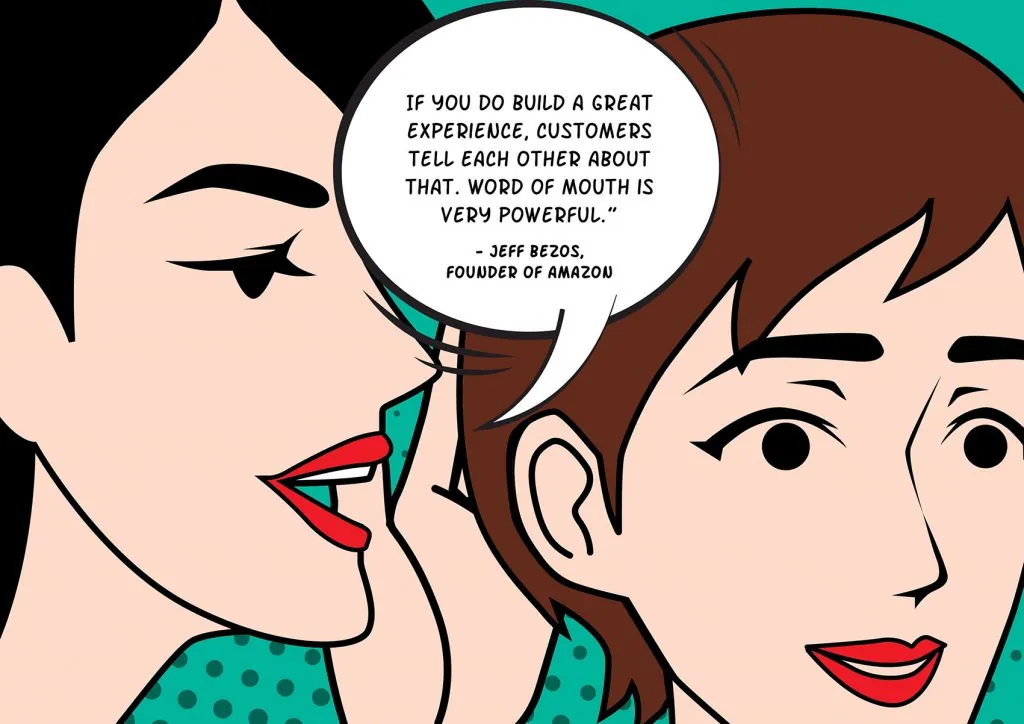Do you find yourself patronising a store more frequently as compared to another? If so, have you ever wondered what makes you return after every visit?
Well, there could be a variety of reasons such as convenience of a store’s location, reasonable pricing and even good deals. But personally, shops that are able to woo me back are the ones that top off their quality products with exceptional service and customer experience.
“Customer experience is the new marketing.”
– Stephen Cannon, Mercedes-Benz USA’s CEO
With growing efforts poured into creating a positive customer experience (CX) for shoppers, it is no surprise that CX is expected to beat other brand differentiators such as price and product by 2020.
With the increasing importance and focus placed on CX, we have analysed and identified 5 key elements of customer service which could help your retail business in developing an excellent CX for your customers.
1. PUT ON THAT BILLION DOLLAR SMILE
Making it first on our list, we would like to reiterate the importance of exhibiting a warm, welcoming and sincere smile when interacting with your customers. Seems like the obvious but there are still service staff who are… perpetually angry:
As critical information points for your customers in the retail store setting, your store assistants are going to represent your brand as ambassadors and subject-matter experts. Poor customer service is one of the reasons why customers are left with poor in-store experiences.

Greet with a smile as it would help to break down walls of communication and forge an affable first impression with your customers. By expressing your pleasure to help, often with a smile and pro-activeness to assist, you are potentially opening doors for more opportunities to come.
If your store assistants are approachable, it encourages two-way communication and interaction; through conversations that can help uncover your customers’ needs, it empowers brand ambassadors to walk your customers through their purchase making process and ultimately, influence your customer journey in positive ways.
2. LISTEN & FOLLOW UP WITH YOUR CUSTOMERS
If a customer approaches your store assistant, he/she is probably looking for a resolution, perhaps, to a product enquiry, general feedback or even a complaint.
Listen attentively to the details which your customers are ready to share; ask questions to clarify and gain a clearer picture of your customers’ needs, and show your willingness to help them achieve their end goals. Maintain eye contact and avoid interrupting your customer so as to show your sincerity in understanding his or her situation and do your best to resolve the issue.

Active listening would allow you to grasp context and background information about a situation; it gives you the necessary details to understand, evaluate and propose the next course of action for your customers. Make it a good practice to note down vital information gathered from your conversations with customers as these records allow your teammates to swiftly pick up and follow up on the case with ease. The last thing you would want to do is to annoy your customers by having them repeat their predicament multiple times to different people and not receiving the answers they are in search for.

I recall an incident which happened a couple of months back. I had raised an issue with a telco’s help desk multiple times with no updates or clear solution to the problem which I was experiencing. Each time a service officer promised to return my call, none came and I had to call in again.
It was frustrating to have to repeat my issue over and over again to a new customer service officer looking into the case. If you have had a similar experience before, you would probably be familiar with how miserable this can turn out for the customer.
Backed by Accenture’s findings on consumer attitudes towards customer service practices, a majority of survey respondents reported getting frustrated in similar situations as I did:
It is essential to ensure your customers are attended to promptly. Take the initiative to give timely updates and avoid making your customers go in circles as it would only further distress them, which would lead to higher customer attrition.
3. MAKE YOUR CUSTOMERS FEEL GOOD
There are many ways to make your customers feel good. It could start from a smile, expressing willingness to assist or even offering an exclusive discount. Through genuine two-way conversations and engagement with your customers, you will find yourself understanding more about their motivations, needs and even preferences.
Treat your customers with respect and provide cordial, humanly customer service. You know it when a customer service officer is reading lifelessly off a script. Sure, standard operating procedures (SOPs) are often put in place to better manage work flows effectively, but this may often come across as inflexible, cold, distant and even artificial. Make your customers feel good and comfortable by letting them know that you hear their issue and empathise with their situation; and with all due respect, you are going to do your utmost best to help them find a resolution.
While we refer to these gestures, plainly, as qualities of customer service, Danny Meyer, the Chief Executive Officer of the Union Square Hospitality Group refers to this as “hospitality”. He explained, “What ‘service’ means is that a restaurant, or any type of business, did the things they were supposed to do. When we talk about ‘hospitality’, what we are talking about is how did the provider of the service make the recipient feel; and they are completely different things.”
4. COMMUNICATE CLEARLY AND EARNESTLY
Communication is not what you say but how you say it, as well as how you show it. Let’s imagine… you approached a service staff who adopts the following stance:

How would you feel?
I’d probably get the impression that he/she is uninterested, unhelpful or aloof; and if given a choice, I doubt I would approach him/her for help. As Harvey Wolter once said, “You can tell a lot by someone’s body language.” As customer-facing personnel, it is crucial to observe positive body language, which promotes interest, preparedness and enthusiasm.
In conversations with your customers, adopt a professional tone of voice and speak in simple terms. If your customer is already feeling tensed by a certain situation, using jargons and slangs would only make matters worse. Guide your customers and reassure them by taking on a positive speech tone and perspective. At the end of the day, your customers are looking for an answer to their problems. They want to know how you can help them and not what you can’t.
Recommended read – “15 Communication Skills That Are Crucial to Sales Success”.
5. MAKE IT EASY TO FIND A RESOLUTION
A study by Dixon, Freeman and Toman found that customer loyalty and customer service can be improved when service employees offer solutions to their customers’ with minimal effort expended on a customer’s part. With the least amount of effort taken to solve a problem, and less time wasted waiting on hotlines, customers leave with higher satisfaction levels and businesses stand to benefit from lower customer service costs, as well as improved work efficiency.
If you have been listening to your customers well, you would also have some sort of indication on commonly asked questions. Consolidate those questions and compile it into a Knowledge Base so customers with similar questions are able to retrieve answers quickly and conveniently. Remember, the lesser the effort taken to solve an issue, the better the customer experience.
CONCLUSION
Good customer service practices allow employees to engage and establish a rapport with customers. Positive interactions facilitated by your sales assistants can improve the overall customer experience substantially.

Satisfied and happy customers will propagate word of mouth marketing, which is free and highly beneficial to the image building and reputation of a company. However, it is also important to note that word-of-mouth could work against companies like a double-edged sword.
We hope the 5 pointers mentioned above can help retailers work out a strategy that provides the best-possible CS and CX to customers. As explained by Esteban Kolsky, silence does not represent customer satisfaction because “91% of unhappy customers who are non-complainers simply leave.”

